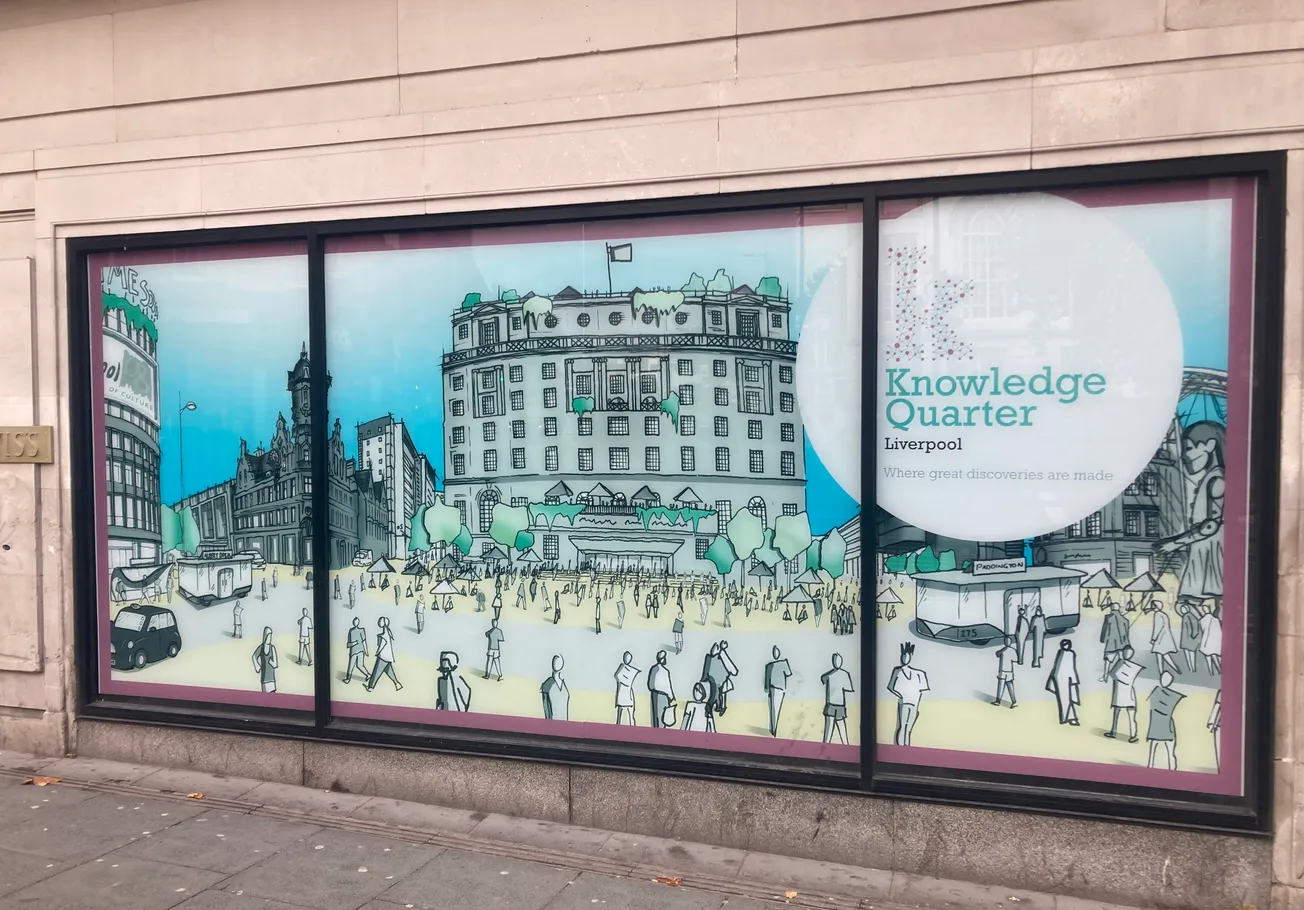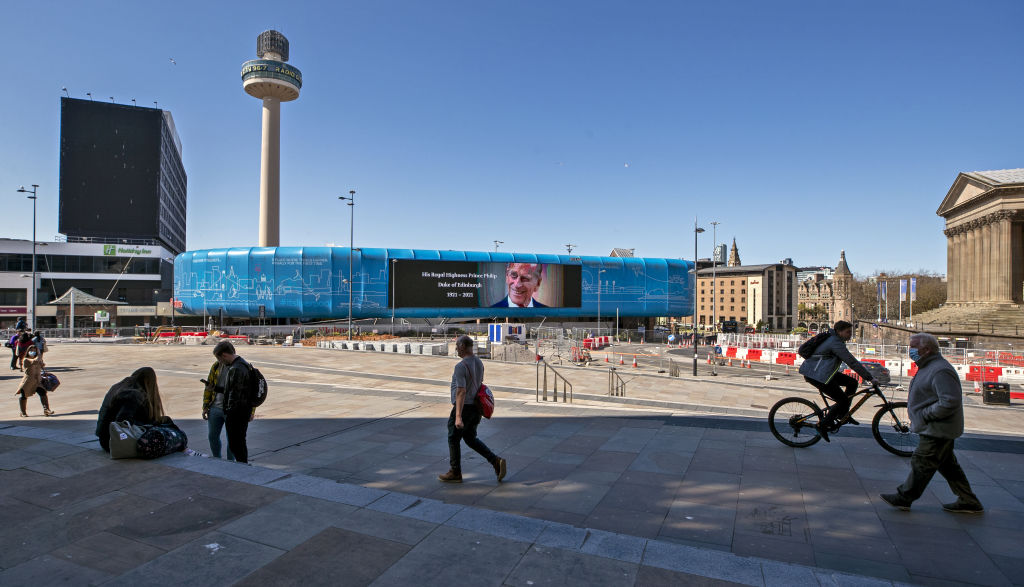Welcome to Eurovision! Welcome to Lime Street…

Liverpool has the eyes of the world. But what will their first impressions be?
Dear members — Liverpool is easy on the eye, we know that. Think of the cathedrals, the architecture, the neoclassical juggernauts. All that beauty. But given that, don’t you think the space in front of Lime Street, the first vista that greets the eyes of newcomers and returners-home alike is a little…underwhelming? Back in 2017 the council asked for firms to come forward with designs for that space. We tracked down one of the men behind the winning design and asked him how the area could be transformed.
As always, our Thursday edition is a members-only affair, but readers on our free list will be able to read the top of the email, and should join up as members now if they want to read the rest, support our work and get all our high-quality reporting in their inbox every week. After a stellar start to the month, we’ve had a lull in new subscriptions in the past week, so get on board to help us hit 600 members in the next few days.
First things first, your Thursday briefing, including a new role in the cabinet for St Helens-born Thérèse Coffey. Tuck in.
Your Post briefing
Britain’s new Prime Minister Rishi Sunak has assembled his cabinet, with Liverpool fan and St Helens native Thérèse Coffey moving in the game of ministerial musical chairs from health secretary to environment secretary. No Liverpool representation in the great offices of state sadly; Jeremy Hunt remains as chancellor, James Cleverly remains as foreign secretary and Suella Braverman returns as home secretary after a six day absence. After the departure of Kwasi Kwarteng as chancellor two weeks back, Daily Telegraph journalist Christopher Hope pointed out that Liverpool College briefly had better representation in the cabinet than Eton College (Jake Berry and Kit Malthouse to Jacob Rees-Mogg). Such is the constant state of change in the cabinet, Hope’s observation is already redundant. Rees-Mogg, Berry and Malthouse are all gone.
Dean Garforth from Dingle, one of the UK’s most wanted fugitives, has been arrested in Marbella after an e-bike chase. Garforth, 29, had been part of a crime gang selling cocaine and guns in England, and there was an appeal in January to find him as one of 12 suspects believed to be hiding in Spain. He was the sixth of the 12 arrested after he was traced and spotted in the upmarket marina of Nueva Andalucia. Garforth is accused of using the phone network Encrochat — widely used by criminals — which police infiltrated two years ago as part of Operation Venetic.
Open newsroom: This weekend we’ll be publishing a long-read about the West Derby selection battle and Ian Byrne’s fight to retain his seat in the constituency. We’ve spoken to several local councillors and Labour CLP members so far, but are still on the lookout for more. We’d especially like to hear from supporters of Byrne at this stage. We are always happy to speak to people off the record in the first instance, and we will treat your information with confidence and sensitivity. If you’re willing to talk, email jack@livpost.co.uk.
Post Picks
🎷 From just down the M62, Manchester heavy hitters Baked A La Ska bring their vintage ska sound to the Royal Philharmonic to celebrate Halloween. “Upbeat anthems and dancehall skanking…wouldn’t you just love to see this lot live?” said The Sunday Times. It’s Saturday, it’s 8pm, it’s £15.
🍺 For those who’d rather spend their Halloween weekend drinking “pour your own bottomless beer” than trudging from door-to-door with a bucket of Maoams, head to Black Lodge Brewery on Saturday night (there’s still a prize for best costume though…). Information here.
🎨 Over at the Williamson Gallery in Birkenhead, Northern Irish Wirral-based artist Martin McCoy has a collection of original prints based around the mediaeval Irish story Buile Suibhne and the cursed life of King of Dal Araidhe. It’s called Sweeney’s Unquiet Islands and it runs until 19 November. Here’s some more details.
Picture the Eurovision faithful. Hailing from all corners of Europe, backpacks spilling with glitter and feather boas. They’ll land in Gatwick or Heathrow. Or Manchester or John Lennon. From there they’ll check their Little Guides to Liverpool and set forth to a station known to them only as “Lime Street”. Excitement abounding, a song in their hearts.
Having sold off family heirlooms and first borns alike for a bedazzled jumpsuit and a four night, forty grand stay at a luxurious “Edwardian style” hotel called The Adelphi they’ll rock up with heady optimism. And then they’ll emerge from Liverpool Lime Street Station.
It’s a strangely cobbled-together vista. Neoclassical grandeur to the East. Anonymous student accommodation to the West. The Capital of Culture-era digital billboards of St John’s market (that were meant to be taken down years ago but no one ever got round to it) straight ahead. Loitering in the background; the lanky figure of the Radio City Tower — like Jacob Rees-Mogg peering in disgust over a garden fence.
It isn’t just Lime Street and its immediate orbit of course. The Adelphi Corridor — that strange stretch of A5038 between the station and The Vines hotel — prompts similar amounts of head-scratching. Flanked by brown panels that sketch out the Statue of Liberty and men in donkey jackets for the fortune of customers entering Lidl. The ghosts of the Futurist Cinema must wince at the sight.
The point is this: Liverpool, architecturally speaking, is one of the most beautiful cities in England. And yet its big hello to visitors — Eurovisioners or otherwise — is, well, baffling. Which begs the question, what can be done?

A clue to this question can be found on an advertising board, funnily enough, just beyond that Adelphi Corridor on the side of Lewis’. You may have walked past it without noticing. It features a sketch of a design from 2017 for a re-imaged Ranleigh Square, pedestrians strolling merrily in front of the hotel, none of the map-cap traffic bonanza we all know.
The design was drawn up after the council asked firms to come forward with their plans for the 56 acre space known as “upper central” in the city centre. Architecture firm K2 teamed up with others like HOW and Mott MacDonald and drew up the winning design — what we can now glimpse on the side of Lewis’. Unfortunately for the firms involved, and anyone who uses the space, it exists only on the side of Lewis’, looking out — no doubt overwhelmed with ennui — on the area it was meant to inhabit. The plans remain on the shelf.
K2 and co based their idea on the fact that the building of the Knowledge Quarter had essentially “doubled the city centre eastwards” and that its new fulcrum, or centrepoint, was just down from Lime Street Station where the Portland Stone monolith of the Adelphi stands. So in that space they wanted to put Liverpool’s version of “Time Square” (their words) or Lime Square, pedestrianised, open, dotted with foliage and flaneurs.
Mark Davies, architect director at the firm tells me that K2 had identified a problem: that there was no “sense of arrival” in the space. How did this happen?
Liverpool deserves great journalism. You can help make it happen.
You're halfway there, the rest of the story is behind this paywall. Join the Dispatch for full access to local news that matters, just £7/month.
SubscribeAlready have an account? Sign In

Latest
The watcher of Hilbre Island
A blow for the Eldonians: ‘They rubber-stamped the very system they said was broken’
How Liverpool invented Christmas
This email contains the perfect Christmas gift
Welcome to Eurovision! Welcome to Lime Street…
Liverpool has the eyes of the world. But what will their first impressions be?